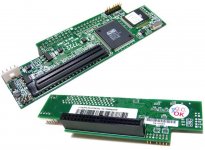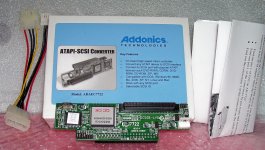Trash80toHP_Mini
NIGHT STALKER
I've started trying to identify the components on the IDE Zip250 to SCSI adapter board on a very interesting Winstation product: WFS2E1W13. The board appears to be a discrete component IDE to SCSI bridge implementation that could be equivalent to the ASIC on ACARD adapters?
Assumption would be that some of the ICs must be programmable logic, but the board might be a good model for development. Programmable logic IC could be dead ends, but where they fall in the schematic might define the underlying architecture. If anyone recognizes any of the ICs offhand, please post them.
Major ICs:
U2 - What should be a stickered ROM
U25 - qlogic - FAS209 - SCSI 10MB/s SE 8bit
U5 - Intel - S0C31BHI - ????? - appears to be a stock part equivalent to same part number from Mfr. TMS - anybody have info on that company or the chip's function? Searching came up dry so far.
Thinking here is that this could be a first step in creating a SATA to SCSI board? SATA to PATA chips seem readily available or if not, could be easily harvested from very inexpensive adapters.
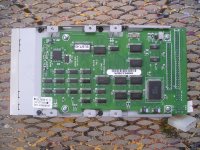
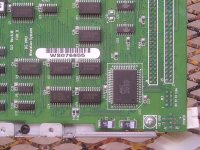

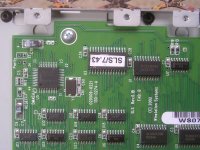
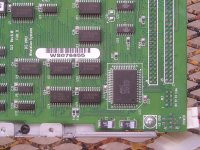
View attachment 29977
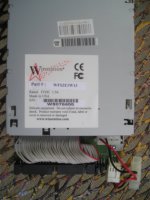
This is so far out of my league as to be ridiculous, but someone might take an interest?
Assumption would be that some of the ICs must be programmable logic, but the board might be a good model for development. Programmable logic IC could be dead ends, but where they fall in the schematic might define the underlying architecture. If anyone recognizes any of the ICs offhand, please post them.
Major ICs:
U2 - What should be a stickered ROM
U25 - qlogic - FAS209 - SCSI 10MB/s SE 8bit
U5 - Intel - S0C31BHI - ????? - appears to be a stock part equivalent to same part number from Mfr. TMS - anybody have info on that company or the chip's function? Searching came up dry so far.
Thinking here is that this could be a first step in creating a SATA to SCSI board? SATA to PATA chips seem readily available or if not, could be easily harvested from very inexpensive adapters.





View attachment 29977

This is so far out of my league as to be ridiculous, but someone might take an interest?
Last edited by a moderator:

